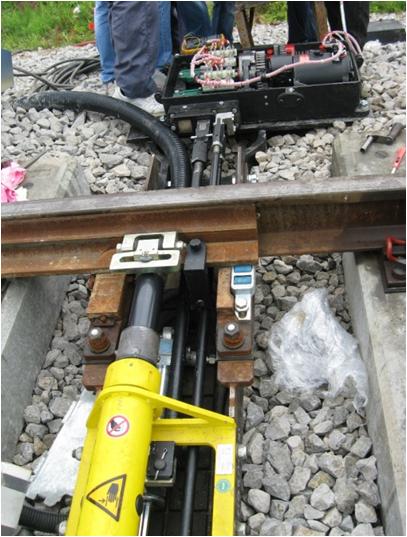
Field of use:
EM-5R-A-SLK switch electromechanisms are used in SCB installations. The basic functions of the switch electromechanism are:
• Ensures the connection and fixing of the needle on the rail in extreme positions;
• Ensures control of the extreme positions of the switch pins;
• Ensures a displacement of 220 ± 5 mm, it is of the heel type;
• EM-5R-A-SLK switching electromechanisms can be operated electrically by remote control from a central station or manually with a handle;
• The electromechanism is equipped with an AC motor;
Technical-constructive parameters:
• Swivel electromechanics can be mounted on both sides of the track switch.
• Operating force:
– 7500 N for EM-5R-A-SLK gearboxes, under any conditions, without stopping the engine;
– 4500 N for electromechanical devices without EM-5R-A-SLK reducer, under the same conditions;
• The maximum heeling force must be 15000 N without causing self-heeling;
• The electromechanism is driven by a three-phase electric motor (3×380 V) with IP40 (SR EN 60529-95), nominal voltage 3 x 380 V, maximum current 2.29 A, nominal speed 940 ± 10% rot. / min. and rated power Pn = 750 ± 10 W;
Dimensions and weight:
• Length: 865 mm;
• Width: (including protection cover of control lines): 1070 mm;
• Height: 245 mm;
• Weight: approximately 210 Kg.
This new type of electromechanism is specific to trackers with Spherolock locking system and has the following performances:
• It has high operational safety, thanks to an improved control system and a set of lines with electrical insulation;
• It has an improved degree of protection by redesigning the access areas (upper cover made of corrugated sheet for increased mechanical protection)
• The stroke of the control lines can be modified from the factory so that the electromechanism can be adapted to the actuation and control of the movable heart changers.
The EM-5R-A-SLK electromechanism is delivered with a set of adjustable bars (one for actuation and 2 for control). . The fixing of the electromechanism to the exchanger is done with a specially designed metal support, which positions the assembly outside the free passage gauge.
